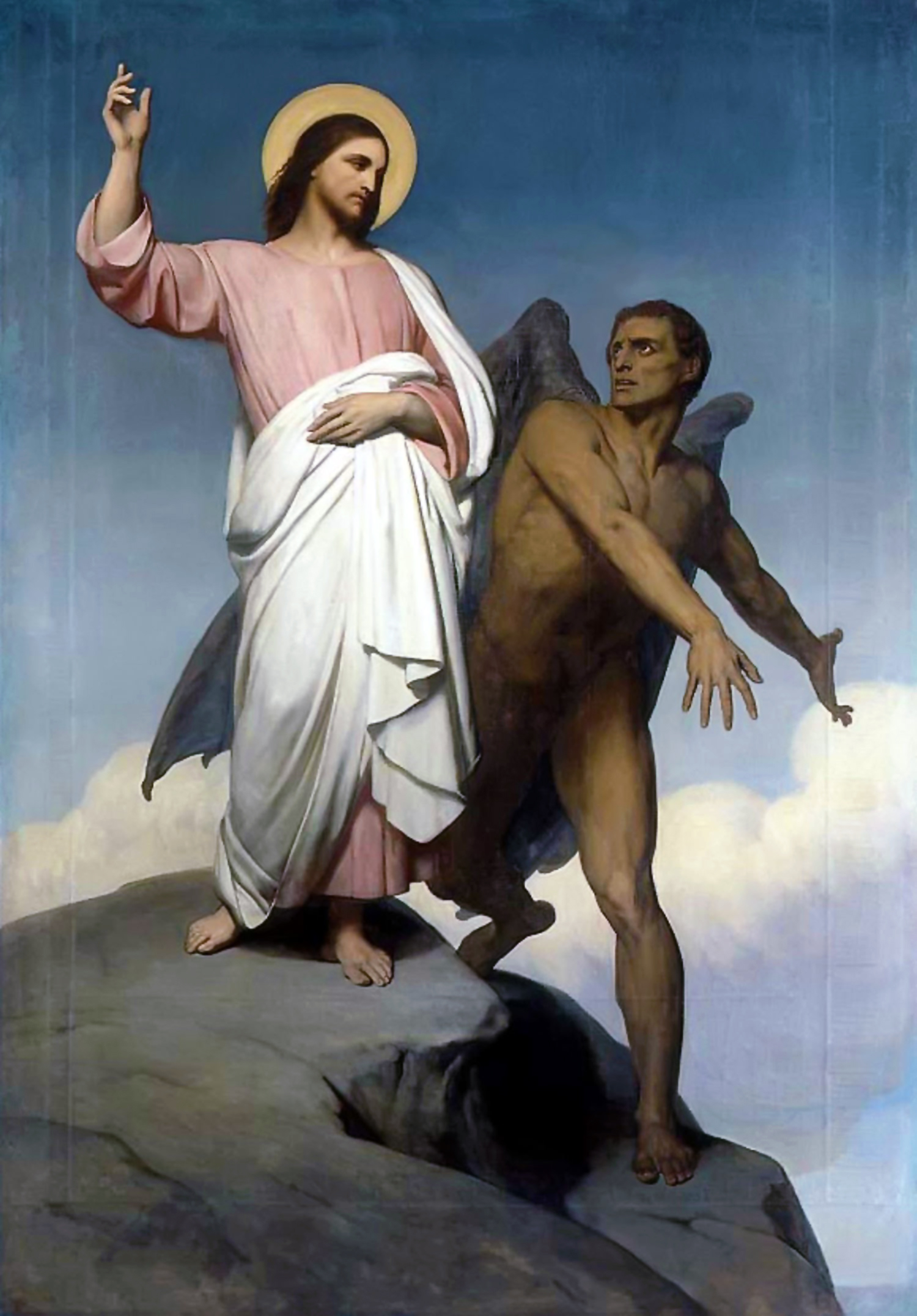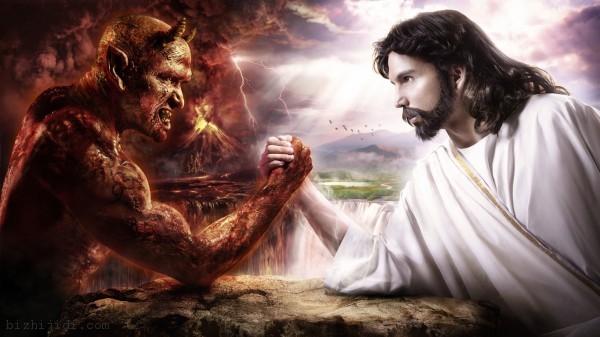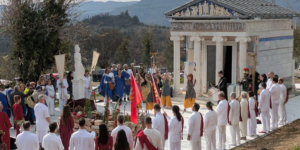Good Vs Evil ?
The Ramayana is said to be an epic that describes the triumph of good over evil, when Shri Rama defeats the rakshasa (demon) king Ravana and rescues his wife Sita from his clutches.But is the dichotomy between good and evil so accurate?Said to have been born with ten heads, Ravana was by some accounts have sacrificed one of these to show his devotion to Shiva. a great scholar, a capable ruler and a maestro of the veena. Ravana is also depicted as the author of the Ravana Sanhita, a book on astrology.Ravana possessed a thorough knowledge of Ayurveda and political science..
Ravana was born to a great sage Vishravaand his wife, the daitya princess Kaikesi.The Daityas were the children of Diti and the sage Kashyapa, who as demonic Asuras, fought against the Devas.Ravana’s his grandfather was the sage Pulastya, one of the ten Prajapatis or mind-born sons of Brahma and one of the Saptarishi (Seven Great Sages Rishi) in the first Manvantara.Indceed Rama had once addressed Ravana as a “Maha Brahman” (Great Brahmam in the context of his learning and mastering of the Vedas). His younger brother Kumbhakarna was considered so pious, intelligent and brave that Indra was jealous of him. Along with his brothers, Ravana and Vibhishana, he performed a major yajna and penance for Brahma. Ravana performed an intense penance (tapasya) to Shiva, lasting several years.
 During his penance, Ravana chopped off his head 10 times as a sacrifice to appease him. Each time he sliced his head off a new head arose, thus enabling him to continue his penance.At last, Shiva, pleased with his austerity, appeared after his 10th decapitation and offered him a boon.Ravana asked for immortality, which Shiva refused to give, but gave him the celestial nectar of immortality.The nectar of immortality, stored under his navel, dictated that he could not be vanquished for as long as it lasted. To this day there are even temples to Ravana, recognising him as an unflinching devotee of Shiva.
During his penance, Ravana chopped off his head 10 times as a sacrifice to appease him. Each time he sliced his head off a new head arose, thus enabling him to continue his penance.At last, Shiva, pleased with his austerity, appeared after his 10th decapitation and offered him a boon.Ravana asked for immortality, which Shiva refused to give, but gave him the celestial nectar of immortality.The nectar of immortality, stored under his navel, dictated that he could not be vanquished for as long as it lasted. To this day there are even temples to Ravana, recognising him as an unflinching devotee of Shiva.
There is a huge Shivalinga in Kakinada, Andhra Pradesh, India, installed by Ravana himself, with a statue of Ravana near by. Thousands of Kanyakubja Brahmins of the village Ravangram of Netaran, in the Vidisha District of Madhya Pradesh, perform daily puja (worship) in the Ravan temple and offer naivedyam /bhog (a ritual of sacrifice to the Gods).
 While Rakshasas are commonly called ‘demons’ it is worth noting that they were created from the breath of Brahma. Similarly the Asuras were not born evil form any ‘original sin’ but were divine celestial beings degraded because of their refusal to perform the correct sacrifices, rituals and devotions essential to the cosmic balance.In the Rigveda, the Asuras preside over moral and social phenomena.Among the asuras are Varuna , the guardian of Rta, and Aryaman, the patron of marriages.Two generous kings, as well as some priests, have been described as Asuras.One hymn requests a son who is an Asura. In nine hymns, Indra is described as such. Agni has total of 12 asura descriptions, Varuna has 10, Mitra has eight, and Rudra has six. In the Samudra manthan or Churning of the Ocean of Milk, the Asuras and Devas have to cooperate in order to obtain the amrita (nectar). If there was a concept of Absolute Evil such an idea would not even have been considered.
While Rakshasas are commonly called ‘demons’ it is worth noting that they were created from the breath of Brahma. Similarly the Asuras were not born evil form any ‘original sin’ but were divine celestial beings degraded because of their refusal to perform the correct sacrifices, rituals and devotions essential to the cosmic balance.In the Rigveda, the Asuras preside over moral and social phenomena.Among the asuras are Varuna , the guardian of Rta, and Aryaman, the patron of marriages.Two generous kings, as well as some priests, have been described as Asuras.One hymn requests a son who is an Asura. In nine hymns, Indra is described as such. Agni has total of 12 asura descriptions, Varuna has 10, Mitra has eight, and Rudra has six. In the Samudra manthan or Churning of the Ocean of Milk, the Asuras and Devas have to cooperate in order to obtain the amrita (nectar). If there was a concept of Absolute Evil such an idea would not even have been considered. Monotheism and Devil Worship
 The Christian missionaries who came to India denounced Hinduism as devil-worship. They had done the same elsewhere. Indeed the whole classical civilisation on which European thinking was built was pagan, and therefore devil-worship. The many gods had to make way for the one.
The Christian missionaries who came to India denounced Hinduism as devil-worship. They had done the same elsewhere. Indeed the whole classical civilisation on which European thinking was built was pagan, and therefore devil-worship. The many gods had to make way for the one.
That is why monotheism is defined as belief in one god, and that alone. Yet is it really? Indeed it seems that the sinister evil figure known as Satan, Lucifer or the Devil actually seems to play a much larger role than God. In his 1982 book ‘Word as Revelation’, the late Ram Swarup wrote:
“The Spirit is a unity. It also worships nothing less than the Supreme. Monotheism expresses, though inadequately, this intuition of man for unity and for the Supreme…. When the urge for unity is spiritual, the theology of One God is no bar and the seeker reaches a position no different from Advaita, from ekam sat.
He realizes that God alone is, and not that there is only One God. But if the motive for unity is merely intellectual, it helps little spiritually speaking. God remains an outward being and does not become the truth of the Spirit.
It does not even help to reduce the number of Gods; instead it multiplies the number of Devils – if Christianity is any guide in the matter. We know Medieval Christianity was chockfull of them. In fact, they occupied the centre of attention of the Church for many centuries to the exclusion of everything else.
During these centuries it was difficult to say whether the Church worshipped God or these devils…..The Church also abounded in Gods though they were not as plentiful as the devils. But these were not recognised as such because they appeared in the guise of angels, cherubims and seraphims.”
 Indeed do this monotheist God and his Satanic adversary actually vie for supremacy? Are there perhaps two gods needed in monotheism rather than one as is commonly believed?
Indeed do this monotheist God and his Satanic adversary actually vie for supremacy? Are there perhaps two gods needed in monotheism rather than one as is commonly believed?
Although tragically infected by monotheism himself, Swami Dayananda nevertheless wrote this when examining Christianity, in Satyarth Prakash:
“Had the God of the Christians been an Omniscient Being, why would He have created this ‘Subtle serpent’ or Satan? But as he did create him, He alone is responsible for all the evil deeds done by Satan for had He not created him evil (by nature) he would not have done evil deeds.”
But to have Satan at all we need a concept of Absolute Evil. The history of monotheism is not the history of god, but the Devil. The Bible itself hints at this. Isaiah 45:7:
“I form the light and create darkness. I make peace and create evil. I the lord do all these things”.
The Evil Narrative
 The concept of evil and being demonic permeates secular life. The use of terms such as ‘right-wing’ or ‘left-wing’ are not just political descriptions. They are often employed as terms of denunciation. The late Sita Ram Goel wrote in ‘Perversion of India’s Political Parlance’:
The concept of evil and being demonic permeates secular life. The use of terms such as ‘right-wing’ or ‘left-wing’ are not just political descriptions. They are often employed as terms of denunciation. The late Sita Ram Goel wrote in ‘Perversion of India’s Political Parlance’:
“…..people and parties who call themselves Leftist also claim to be progressive, revolutionary, socialist, secularist and democratic. At the same time they accuse the ‘Rightists’ of being reactionary, revivalist, capitalist and fascist. At this stage, the labels cease to be merely descriptive.
They become laudatory and denunciatory instead. Labels like progressive and revolutionary, etc., acquire an aura of virtue and holiness. On the other hand, labels like reactionary and revivalist etc., start smelling of vice and sin.”
 Gerald Messadié is a French scientific journalist, historian, essayist and novelist. In 1993 he wrote ‘The History of the Devil’, which was translated into English by Marc Roman in 1996. In this fascinating work, Messadié begins by explaining how the modern world itself believes in the Devil.
Gerald Messadié is a French scientific journalist, historian, essayist and novelist. In 1993 he wrote ‘The History of the Devil’, which was translated into English by Marc Roman in 1996. In this fascinating work, Messadié begins by explaining how the modern world itself believes in the Devil.
Khomeini called America the Great Satan. Reagan meanwhile referred to the USSR as the Evil Empire. In Christianity the Devil controlled all evil.
The universe was subject to an eternal conflict between Good and Evil, as absolute constructs. Secularism inherited this chasm. Satan was certainly proving to be a useful political tool. Messadié then asks where did this concept of Absolute Evil come from.
Looking at cultures which the missionaries and their secular offspring denounce as primitive he brings up some astounding revelations. The Melanesians for example had two principal and antagonistic creator beings.
But this was not a simple good and evil dichotomy. Malevolence was not the preserve of specific tribes, spirits or gods. It was found throughout the cosmos.
F or Australia’s indigenous Marras, the sky is the abode of two spirits known as Minungara. They are simultaneously good and bad. They want to kill off anyone who falls ill. But they also teach witch doctors how to heal the same sick people. There is nothing exclusively evil about them. Messadié on page 27:
or Australia’s indigenous Marras, the sky is the abode of two spirits known as Minungara. They are simultaneously good and bad. They want to kill off anyone who falls ill. But they also teach witch doctors how to heal the same sick people. There is nothing exclusively evil about them. Messadié on page 27:
“Semantic ‘revisionism’ is a prerequisite to understanding Pacific religions. The term ‘demon’ cannot be taken in the European sense, that is, as a servant of the Devil exclusively and inextricably bound to his brother demons.
If the majority of demons in the Australian religions are in fact malevolent and eat human beings, there is also a demon, mangukurata, which Pindupi tribesmen believe consumes other demons.
Not only does no comparable oddity exist in the monotheistic religions, but it would in a way be an ally of God. Yet the Australian mangukurata is no less malevolent for the fact that he hunts and devours his fellow demons.”
 Before their conversion to Christianity, the Nagas of north-east India also had no belief in Absolute Evil, but instead varieties of evil, each with its own cause and remedy. On page 33 of The History of the Devil:
Before their conversion to Christianity, the Nagas of north-east India also had no belief in Absolute Evil, but instead varieties of evil, each with its own cause and remedy. On page 33 of The History of the Devil:
“The object of primitive religion is to establish equilibrium among the various supernatural powers that surround the human being, and this is accomplished through ritual. Neither an irreversible split in the world nor original sin exist, and man is not in the thrall of supernatural forces. The goal of religion is to keep the to and fro of the gods and demons from overly disrupting human activities, neither gods nor demons have ethical value.
They are ambivalent and somewhat troublesome strangers it is best to respect, but who do not dictate any theological system. In other words, primitive religion is really a process of exorcising the supernatural – the exact opposite of what monotheism claims.”
Satanic Atheism
Then Messadié hints at the origins of monotheism itself. Oceana never suffered plague and famine like the western world. Nor the speed of literacy that was found among Greek and Roman civilisation. Above all, there was no centralised religion. Now that could only come from a centralised state like the Roman Empire.
Moving to India, Messadié finds Vedanta as being dualistic. The Devas are balanced by the Asuras, interpreting the cosmos based upon these necessary antagonisms. In Jainism he finds no god and no devil. Yet ethics are highly formalised. At the point of becoming Buddha, Siddhartha Gautama was tempted by Mara. Yet again this Mara is not the Devil as western civilisation understands the concept.
 In Buddhism the demons inhabit a lower plane of existence. The world of desire is populated by gods, men, demons and phantoms. But there is no eternal damnation. There are no hells but mere purgatories. Evil is not eternal. Reincarnation offers hope. Nirvana offers eternal release from this cycle of rebirth.
In Buddhism the demons inhabit a lower plane of existence. The world of desire is populated by gods, men, demons and phantoms. But there is no eternal damnation. There are no hells but mere purgatories. Evil is not eternal. Reincarnation offers hope. Nirvana offers eternal release from this cycle of rebirth.
Régis Debray teaches philosophy at the University of Lyons III. He is also director of the European Institute of History and Science of Religion at the l’École pratique des hautes études in Paris. In his 2001 book, ‘God: An Itinerary’, which as translated into English three years later, he writes on page 2:
“No doubt belief is natural to mankind for the only animal that knows if it is going to die. But is it so unnatural to ‘believe in God’ that many civilizations we still remember, and the most refined among them at that, were able to live and die without having the slightest notion of a Creator at once omnipotent and sufficiently solicitous to sidle up whisper in our ear.
Only the prophetic religions endowed with a putative founder (such as Moses, Zarathustra, Mani or Mohammed) have entertained so bizarre a conception. His epidemic spread has diverted our attention from the infinitesimal and random evens that serve to trigger things.”
Later Debray elucidates on how the fine line between polytheism and monotheism is itself very tenuous. Page 32:
“Polytheism, in its polymorphous approach to the divine is more monotheistic than we might think, and monotheism is always more polytheistic than it would have us believe (the One is sought in the multiple, and multiplicity survives in the One.”
In order to understand this we need to jettison the idea that there was a clean revolutionary break with the past. Monotheism did not arrive and destroy the ancient pagan cultures it found. It arose from their very heart.
The origins of monotheism are polytheist. While dualism can be seen in Vedanta, it would take a seismic philosophical shift for this to degenerate into elements leading to monotheism.

































1 Comment